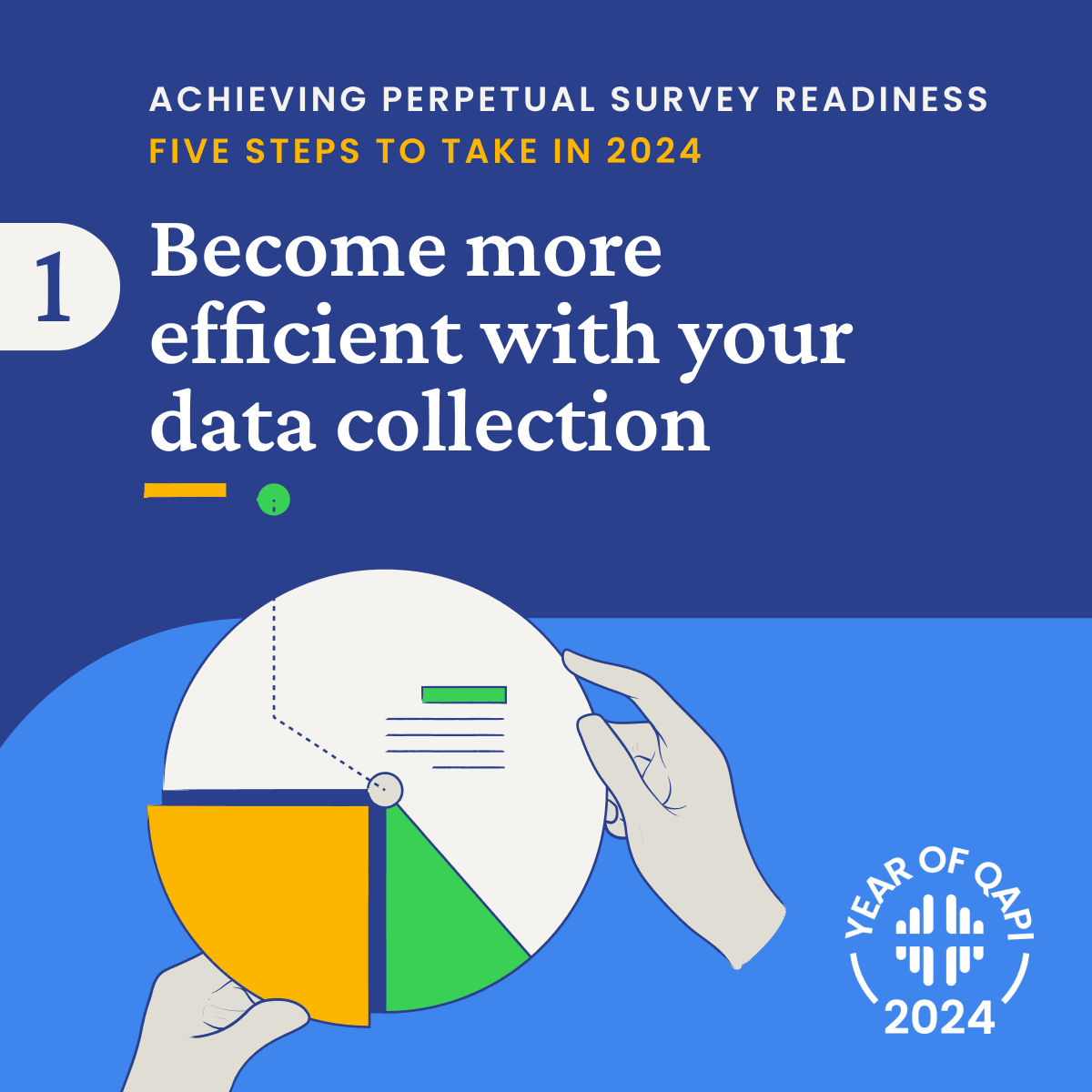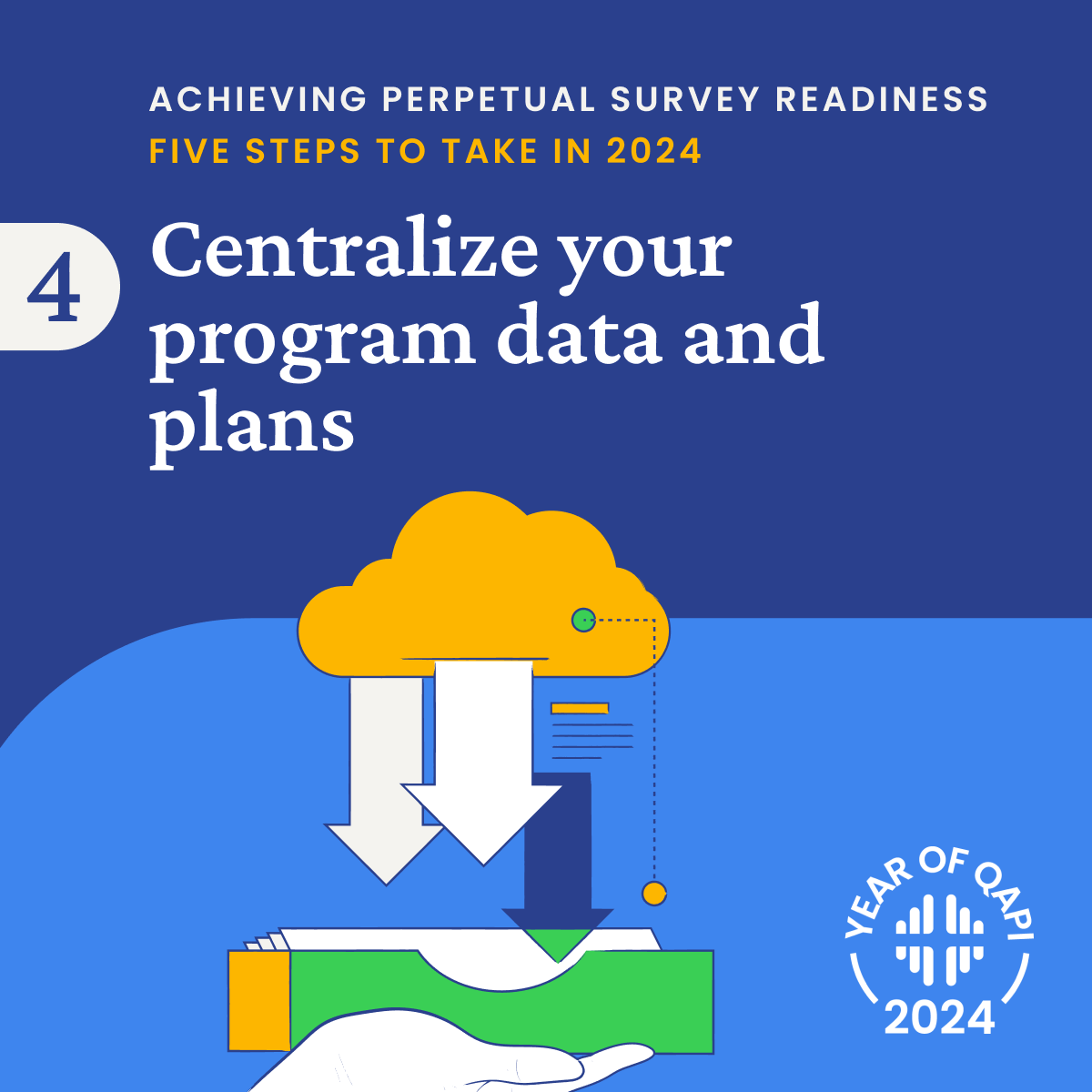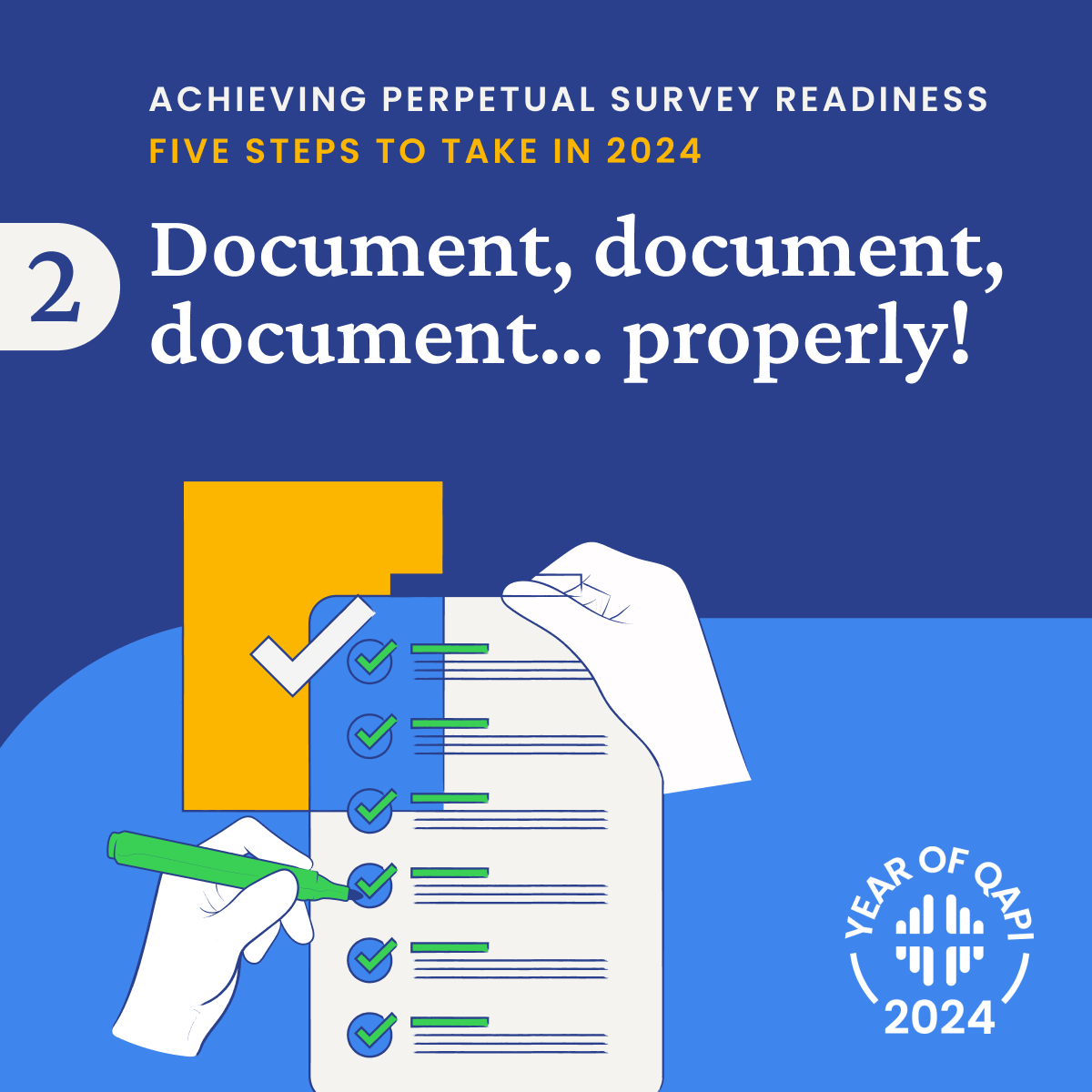2 min read
5 Steps to Achieving Perpetual Survey Readiness: Centralize and Standardize Programs
With CMS intensifying its oversight on hospice and home health organizations, adapting to a proactive compliance posture is essential. There are no...
2 min read
QAPIplus : Mar 21, 2024 2:49:09 PM

With CMS intensifying its oversight on hospice and home health organizations, adapting to a proactive compliance posture is essential. There are no more prior notification of surveys, no more block out days, CMS will take over validation surveys by sending in a CMS contracted agent with the Accrediting Organization simultaneously to co-conduct the survey, and state complaint surveys may turn into full validation surveys. The only way to be ready for surprise surveys is to stay survey ready at all times. This blog series lays out the Five Most Important Steps to achieve Perpetual Survey Readiness.
Step 1: Efficient Data Collection and Reporting
 Achieving survey preparedness and a state of continuous compliance is directly related to the quality of data collected and how that data is used to improve organizational performance.
Achieving survey preparedness and a state of continuous compliance is directly related to the quality of data collected and how that data is used to improve organizational performance.
For home health and hospice organizations this data can be divided into three district parts.
Data can be from many sources including external and internal sources. Two of the major sources of data required to have successful surveys include:
To become more efficient in your data collection and reporting you need to start with an audit of your current strategies. Answer these eight questions:
Then look at your answers and determine where the streamlining opportunities lie. Stop spending hours manually collecting and aggregating data from your audits and incident reports. Start automating as much as possible especially when it comes to quality and compliance data collection and aggregation. We find these are the most common, and best places to start:

QAPIplus digitizes and automates data aggregation so you don’t spend time manually collecting, calculating and reporting your quality and compliance data and see your performance in real time. This enables home health and hospice leaders to make better use of your valuable resources and drive performance improvement more efficiently.
To learn more about how QAPIplus can streamline your data collection and reporting, request a demo today.
Read more blog posts about survey readiness, quality and compliance management.

2 min read
With CMS intensifying its oversight on hospice and home health organizations, adapting to a proactive compliance posture is essential. There are no...

2 min read
With CMS intensifying its oversight on hospice and home health organizations, adapting to a proactive compliance posture is essential. There are no...

2 min read
With CMS intensifying its oversight on hospice and home health organizations, adapting to a proactive compliance posture is essential. There are no...